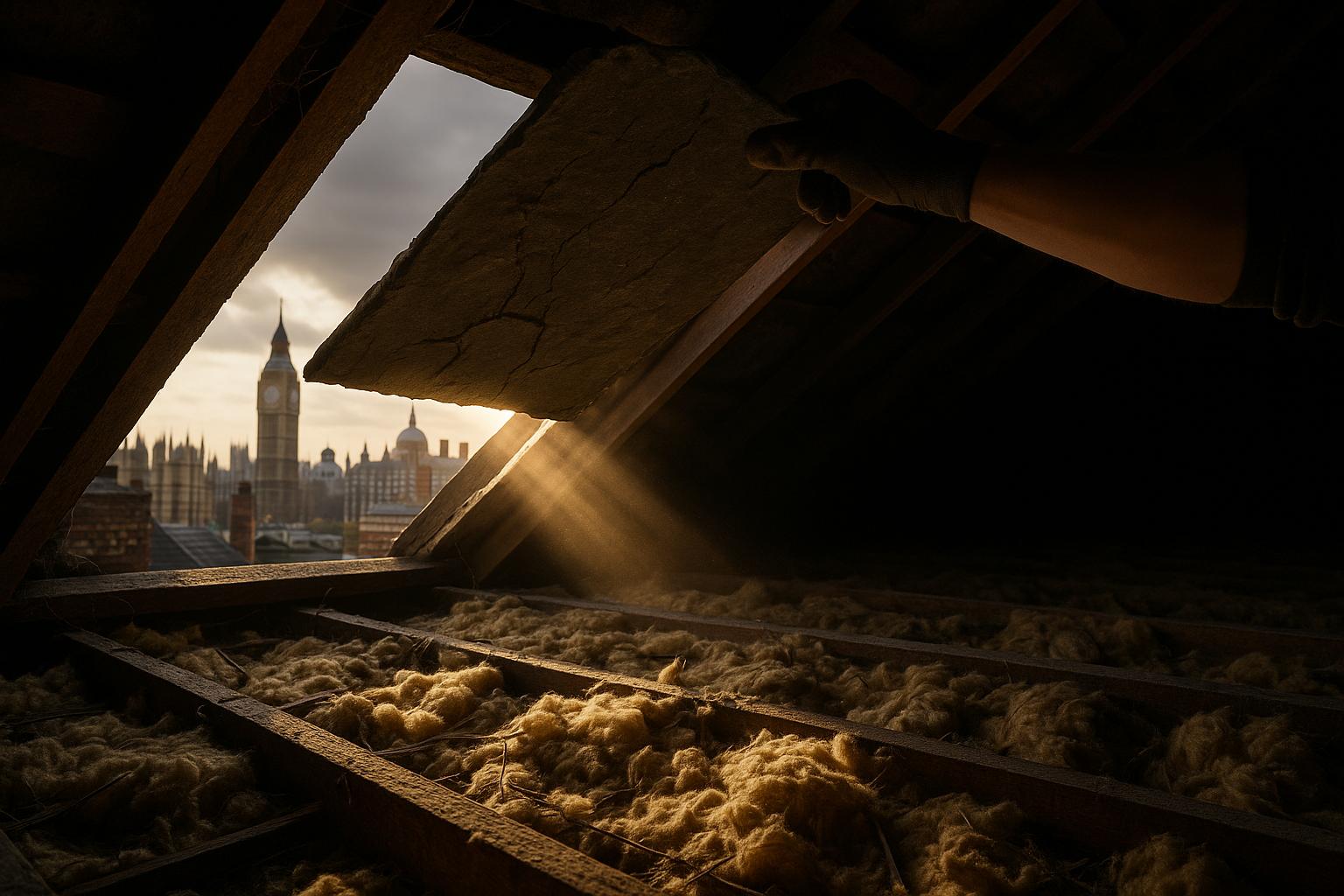New research highlights a stark contrast in roof insulation quality across the UK, with London boroughs dominating the list of areas most in need of improvement. An analysis by Best Roofers, which examined Energy Performance Certificate (EPC) data from 2022 for 331 local authorities in England and Wales, reveals a significant disparity in housing energy efficiency, particularly concerning roof insulation.
The study found that London boroughs occupy 28 of the 30 worst-performing areas for roof insulation, with the City of London ranking at the bottom. There, fewer than 10% of homes have roofs rated as "good" or "very good" in terms of insulation quality. This is a striking figure given the Capital's relative wealth, underscoring a mismatch between socio-economic status and housing energy performance. Wealthy boroughs like Kensington and Chelsea also rank poorly, with only 23% of homes meeting the good insulation standard. Westminster (27%), Camden (28%), and Islington (30%) round out the bottom five, highlighting widespread challenges across London.
The poor insulation ratings have implications beyond comfort, as inadequate roof insulation contributes to higher heating costs and energy consumption. Some London boroughs face average gas consumption bills exceeding £1,000, starkly contrasting others that pay around £524. The prevalence of older properties and heritage conservation regulations in London complicate retrofitting efforts, making energy efficiency improvements more challenging to implement.
Outside London, Watford fares worst, with just 42% of homes rated well for roof insulation. Brighton and Hove, Spelthorne, Portsmouth, and Reading also rank among the lowest-scoring areas, revealing that some urban centres beyond the capital face similar difficulties.
Conversely, smaller and more rural districts tend to perform significantly better. The research found that ten of the top 30 local authorities with well-insulated roofs are located in the East Midlands, including South Derbyshire (second), North Kesteven (third), South Holland (sixth), and West Lindsey (eighth) in Lincolnshire. Richmondshire in North Yorkshire tops the list nationally, with 78.2% of homes having good or very good roof insulation. These areas appear to benefit from a mix of retrofitted older homes and newer developments constructed to higher standards.
Additional data from other studies offers a more nuanced perspective on overall energy efficiency across England. For example, a separate report by Enviro Homes Renewables shows Tower Hamlets leading London, and England, on the proportion of homes meeting EPC Band C or above, at 76.11%, followed by the City of London at around 63-64%. This indicates that although many London boroughs struggle with roof insulation specifically, some have made strides in broader energy efficiency metrics. London overall tends to have a higher median EPC score (70) compared to the national median (68), as reported by the Office for National Statistics (ONS). Yet the concentration of poorly insulated roofs within the city points to specific areas requiring targeted improvement.
The apparent contradictions between roof insulation ratings and broader EPC performance measures highlight the complexities of housing energy efficiency in urban settings. Many London homes, often older and historically listed, face structural and regulatory hurdles to adopting effective insulation solutions, which impacts roof ratings despite possible improvements in other energy efficiency measures.
Industry experts, including Alex Morrisey, Managing Director of Best Roofers, emphasise the urgency of upgrading insulation to combat fuel poverty and reduce soaring energy bills. Morrisey pointed out that improving roof insulation can significantly decrease heat loss, prolong boiler lifespans, and ease household expenditure during costly winters. He expressed cautious optimism that government targets, such as the proposed EPC Band C minimum for all privately rented properties by 2030, could drive improvements and benefits, particularly in cities like London where the need is greatest.
These findings underscore the importance of focusing energy efficiency policies not only on general EPC ratings but also on specific retrofit challenges related to roof insulation in urban areas. With heating costs an ongoing concern, especially for vulnerable and elderly residents, enhancing roof insulation remains a critical and urgent component of broader efforts to make UK homes warmer, more energy-efficient, and affordable to heat.
📌 Reference Map:
- [1] (Installer Online) - Paragraphs 1-8, 11-12
- [2] (UK Construction Media) - Paragraph 9
- [3] (MPA Magazine) - Paragraph 9
- [4] (Office for National Statistics) - Paragraphs 9, 10
- [6] (Pham News) - Paragraph 9
- [7] (Office for National Statistics) - Paragraph 10
- [5] (Letting Agent Today) - Contextual understanding of EPC ratings and urgency throughout
Source: Noah Wire Services
